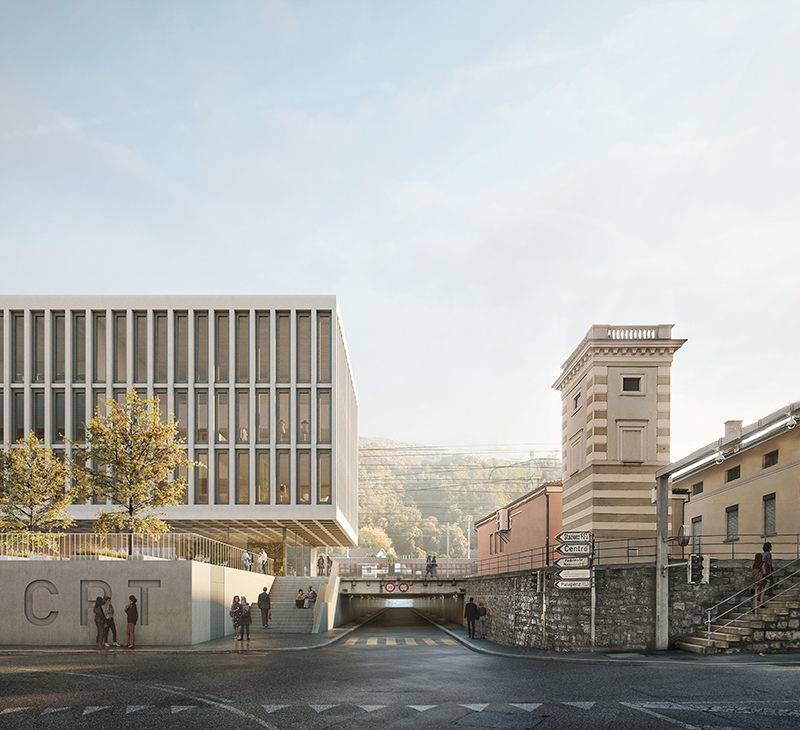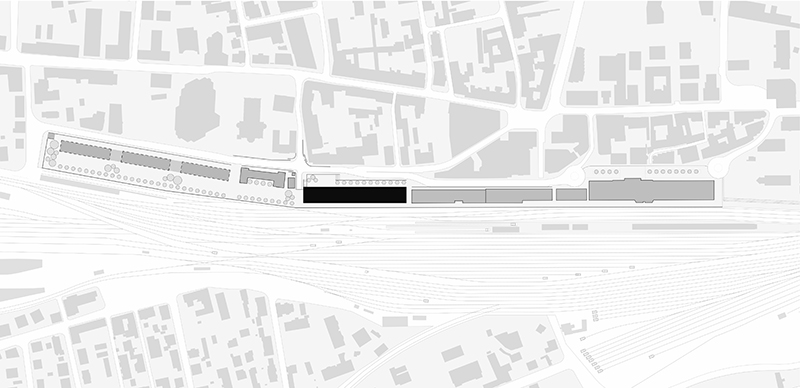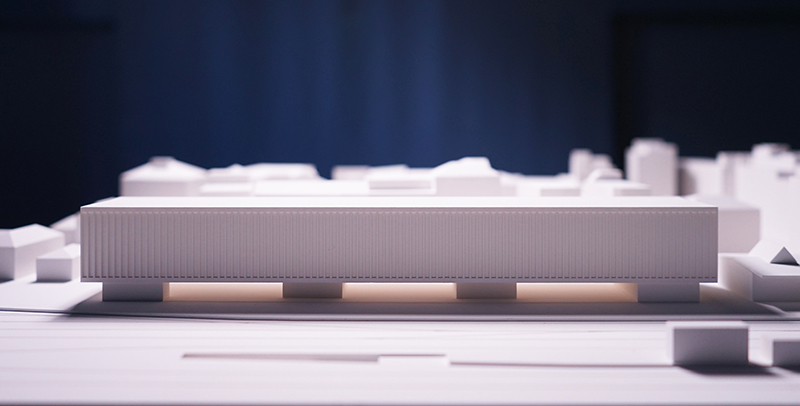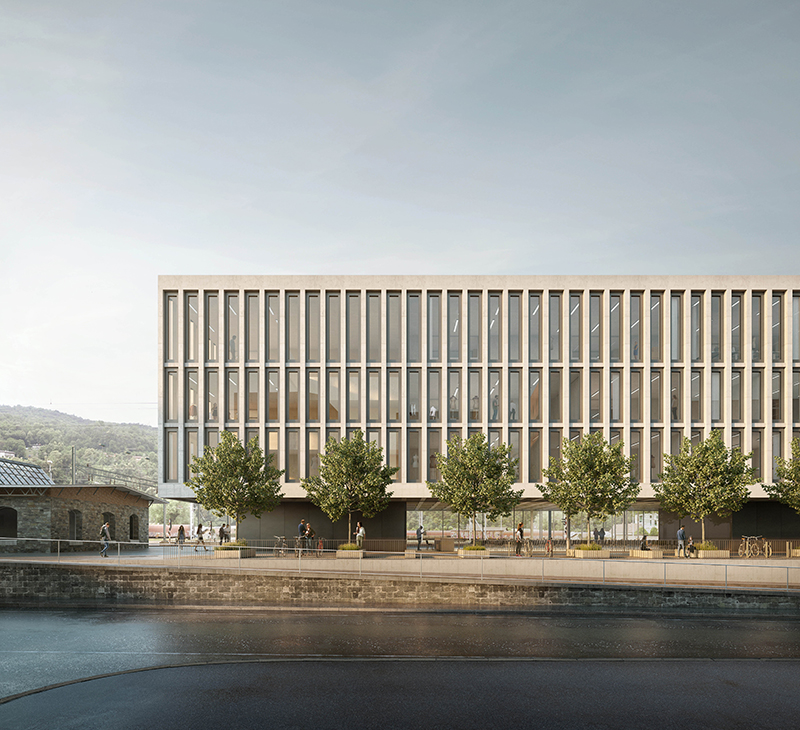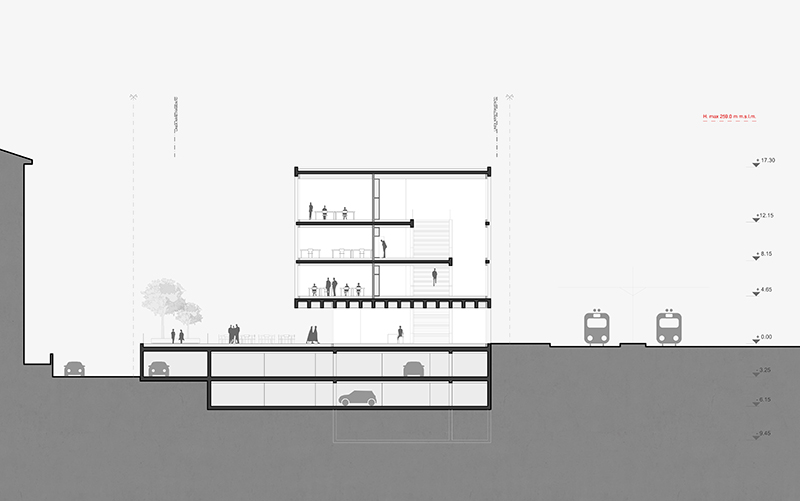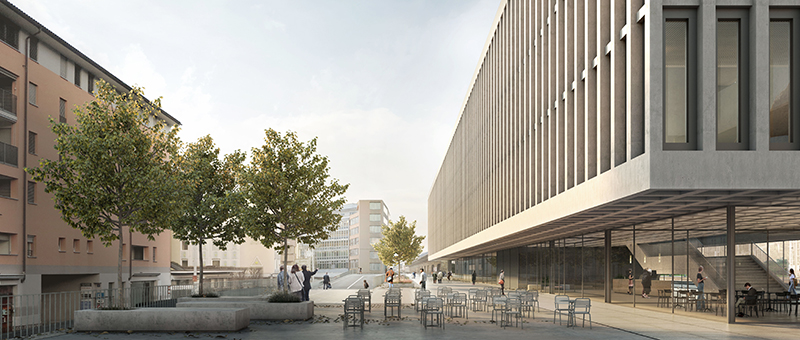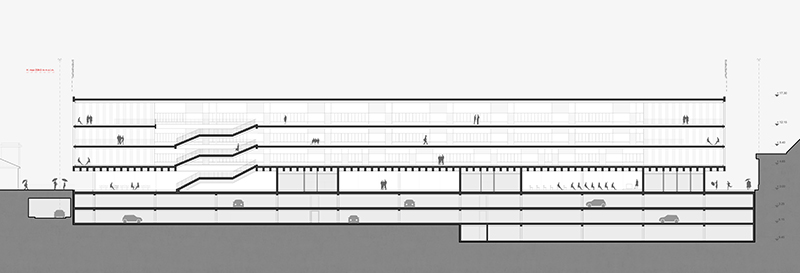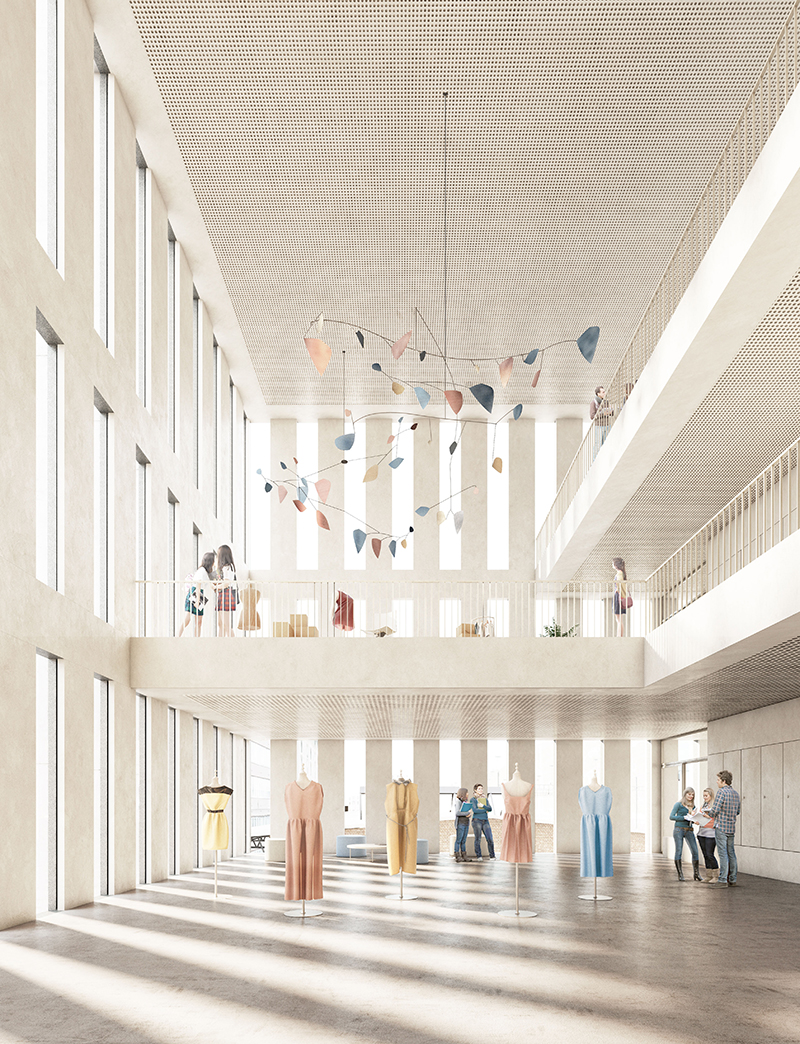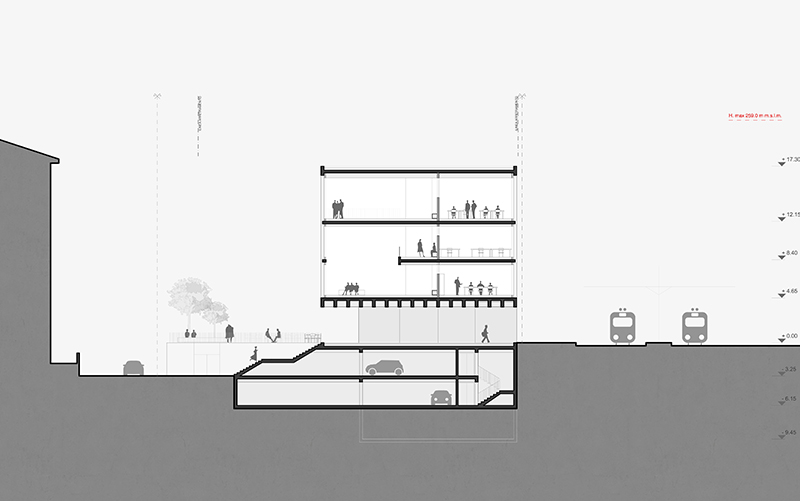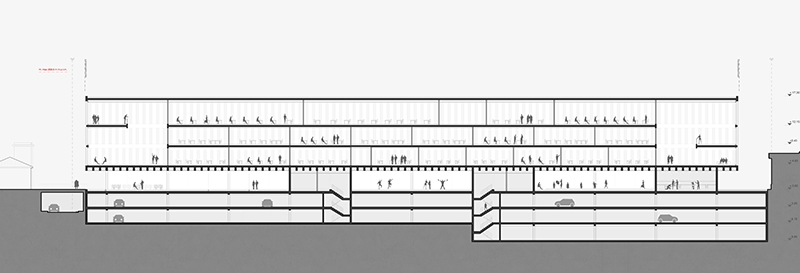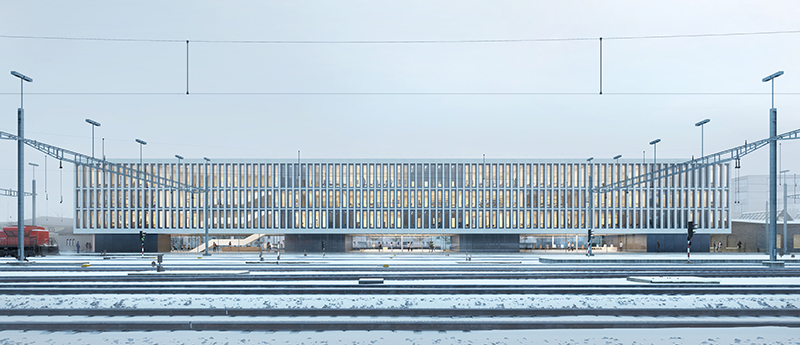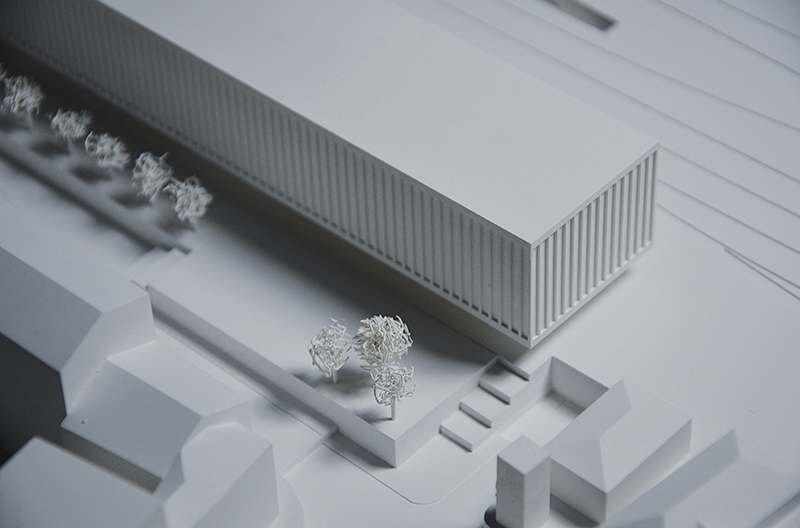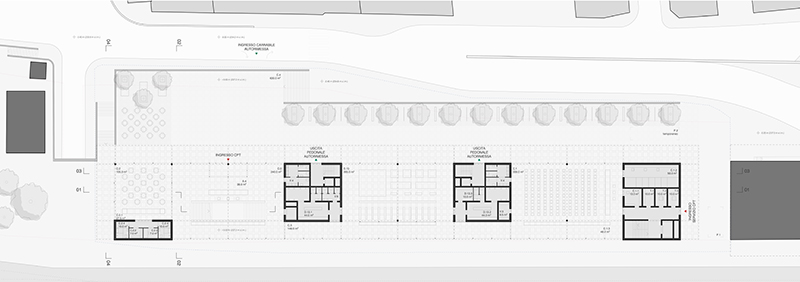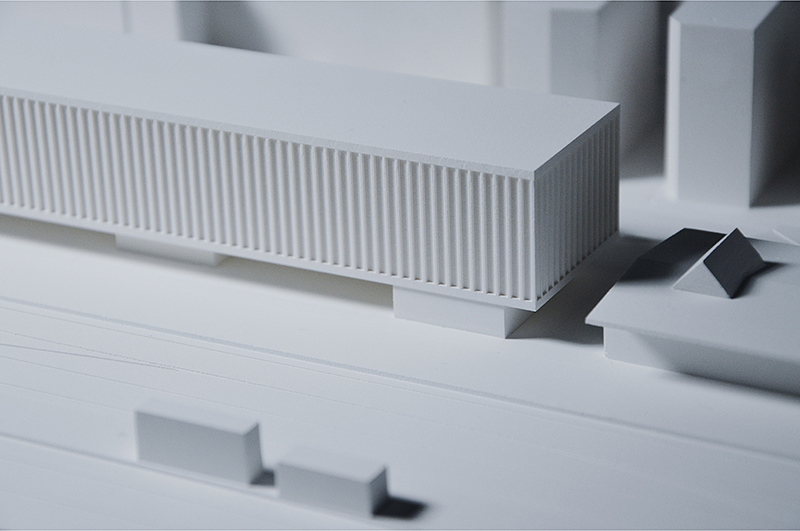TERRITORY
At territorial and infrastructural level, the project lot is located in a strategic position. The area of intervention is in fact located along the international railway axis connecting Switzerland and Italy, in close relation with the station of Chiasso.
The project building is in continuity with the station buildings, becoming part of a system of public facilities that are configured as an urban curtain between the large empty space of the tracks and the city. The project is inserted in an area of transformation that draws a linear urban figure that begins with the station and ends in Via Rampa. The new volume, placed between the old railway buildings and the expansion area, becomes the hinge of the whole system, for current and future transformations.
The project is arranged in a coherent way with the existing basements on Via Livio.
This design choice suggests to maintain a raised level of the ground floor of the building, compared to the road, to establish a closer dialogue with the dock and the city, with respect to which it assumes a great aggregative vocation. The public space obtained interacts in fact with the pedestrian paths and the squares along Corso San Gottardo, placing itself in natural continuity with them.
THEME
The project divides the space program into two main themes: educational areas and areas accessible to the public. The project idea is to bring the school spaces to the upper floors, leaving in this way at the ground floor the spaces with public character
The project proposal identifies, therefore, a ground floor in continuity with the sidewalk and the dock, which are allocated the entrance and those functions that are accessible by users outside the school, such as lobby, bar, fitness room and conference room.
In this way, the ground floor defines a natural synergy between the functions of the building and the city. The pedestrian flows coming from the city and from the station converge in fact in the outdoor spaces, with a strong aggregative value. Above this space there is a volume of three levels exclusively dedicated to the school and connected through a wide staircase with the atrium of the ground floor. The school is defined by a central distribution that serves the classrooms arranged longitudinally and finds the aggregative spaces in the heads.
These, through the horizontal staggering of the floors, allow the development of triple-height atriums on which the social spaces overlook. In addition, along the distribution, where a continuous piece of furniture draws the entrances to the classrooms, alternating cabinets and seats, numerous rest areas are created, making in this way also the space of circulation a place of meeting for the students. Located in the two underground floors is the garage, which can be accessed directly from Via Livio.
The undergroundparking is connected to the ground floor through independent stairs that allow to reach the station without interfering with the internal distributions of the school.
126
A square module of 126 cm side draws the entire building in all its dimensions. The load-bearing structure and the internal divisions are always positioned on this mesh, without ever contradicting it, declining the dimensions of the spaces and the structural step only for needs related to the program and content: vehicles, public spaces, educational spaces.
The volume of the school, defined by a dense structural mesh in the facade, which is developed on three floors, is supported on the ground floor, characterized by large free and glazed spaces. The pitch and the dimension of the structural element on the facade give a monolithic and urban character to the building, characteristics dictated by the project’s will to make the school volume recognizable.
The dense structural rhythm, denounced by the facade, becomes the instrument of resolution of the school’s program of functions, which provides for classrooms sensibly different in size.
The integrity of the external volume is never denied, while ensuring the necessary flexibility of the internal rooms, even for possible future transformations, thanks to the use of non-load-bearing partitions between the classrooms.
The coffered structure of the slab above the ground floor, designed on the modular grid of the building, allows to exploit, on this floor, the entire depth of the building.
The monolithic volume of the school rests on a large open space, completely glazed on the outside, except for the service blocks. The load-bearing structure continues in line with the modular grid also in the underground garage, with the ground floor
staircase blocks continuing into the basement, ensuring a favourable distribution of vehicle parking spaces.

